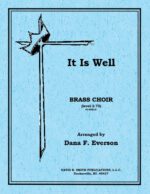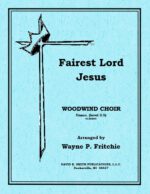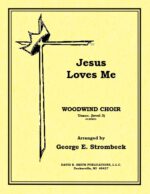| Instrument | |
|---|---|
| Level | 4 |
| Occasion | |
| Theme | March of the Three Kings |
| Writer | |
| Publisher |

Fantasia On A 13th Century Carol
$79.00
Related products
-
It Is Well
$12.00Brass choir scored for four trumpets (opt horn) two trombones, baritone BC/TC and tuba. This entire piece is one of serenity, gentleness and great affect. The introduction is in the lower voices producing a rich sound and sense of expectation. The trumpets add in on the melody with long lines of expression, and then the lower voices offer a response in like manner. The next section increases in movement and dynamic until it modulates to a new key center. The phrases now alternate between the low voices in an almost antiphonal fashion. Another modulation elevates the urgency of the piece and the trumpets carry the entire load throughout this section. The rest of the instruments then bolster the ensemble giving increased strength. The pieces quiets and becomes reflective and then settles with an “all is well.”
-
-
-
The Master Hath Come
$11.00Three Plus Flutes for three soprano with opt. 4th/ob. with alto and bass & piccolo. An introduction using unrelated material leads the tune presented in voice two, supported by harmonies in the lower voices, then an obbligato-like motion added by the upper voice. A modulation upward makes room for a duet in the upper lines, later joined by the lower voices in a contrapuntal fashion. The final section becomes more vigorous and imitative until a solid, declamatory ending.
-
Come, Thou Long-Expected Jesus
$11.00Three Plus Flutes for three soprano with opt. 4th/ob. with alto and bass. The begins with the tune in the upper line and then shifted to activity in the inner lines. And then back to the voicing of the beginning, coming to a solid conclusion.






